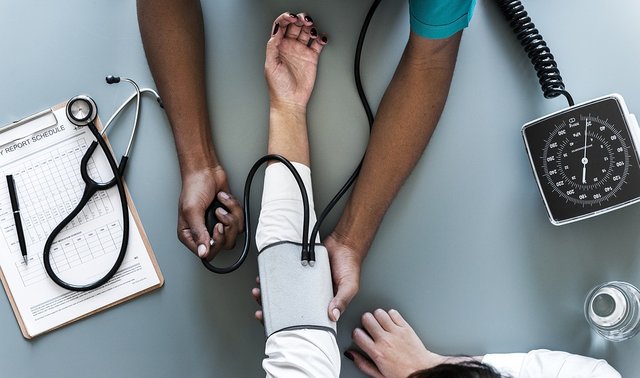What is blood pressure?
Our body cells need oxygen to survive which they receive from blood that carries oxygen to the body cells through a network of arteries. Heart pumps blood into the arteries that applies pressure on them. This pressure is called blood pressure (BP). Many factors can trigger this pressure to increase which puts strain on arteries.
Heart works as a pump. With each heartbeat, blood is forced into the arteries. It generates blood pressure which reaches to maximum when the blood is being pumped. This is called systolic pressure and when the heart rests between beats, blood pressure falls. This is called diastolic pressure.

High blood pressure (hypertension)
A normal adult’s systolic pressure remains less than 120 while diastolic pressure remains above 80 mmhg. In Prehypertension condition systolic and diastolic pressures remain between 120-139 and 81-89 mmHg, respectively. If blood pressure increases beyond this limit, it is called hypertension.
Normally our blood pressure changes according to our activities. It increases when one works heavily and it falls when one sleeps or rests but the continuous state of high blood pressure or hypertension is very damaging as it damages arteries and can cause a heart attack, brain stroke, kidney failure, Blood vessel damage, Aneurysm, Vision loss and off course Erectile dysfunction, etc.
Symptoms of high BP
Normally, hypertension has no specific symptoms. It can be diagnosed after measuring blood pressure with measuring instruments like sphygmomanometer. Also, symptoms like anxiety, dizziness, headaches, nosebleed, fatigue, shortness of breath are a few symptoms of this condition. A person who is obese and takes no exercise or who consumes too much junk food, smokes and drinks heavily should visit a doctor regularly or measure his/her blood pressure in regular intervals as they have more chances of developing high BP.
Low blood pressure (hypotension)
The opposite condition of high BP is Low Blood Pressure (low BP). It is also known as hypotension. If systolic blood pressure is lower than 90 millimeters of mercury (mm Hg) or diastolic blood pressure is below 60 mm Hg, it is generally considered as low blood pressure.
High Blood Pressure is dangerous but Low blood pressure is equally a matter of concern. Some people have no trouble because of it but for many others, abnormally low blood pressure can cause dizziness and fainting. Abnormal low blood pressure can be life-threatening as well.
There are many causes of low blood pressure. Dehydration, endocrine problems, pregnancy, heart problems, loss of blood, diabetes, severe infections, shock, malnutrition and serious medical or surgical disorders can be the causes of low BP.
Symptoms
Extreme hypotension can result in many life-threatening conditions. Low blood pressure generally has following symptoms and signs:
- Dizziness, Fatigue and weakness
- Fainting, Nausea
- Blurred vision
- Lack of concentration and confusion
- Cold, clammy, pale skin, rapid, shallow breathing and weak and rapid pulse are some signs which a patient can manifest when blood pressure decreases too much. This condition is very fatal as the patient can be drowned, burnt or meet with an accident, if he/she faints in the insecure places.
A normal person’s blood pressure limit is 120/80 mmhg. If it increases, it is high BP and if it lowers it is low BP.
(Image source: pixabay.com)